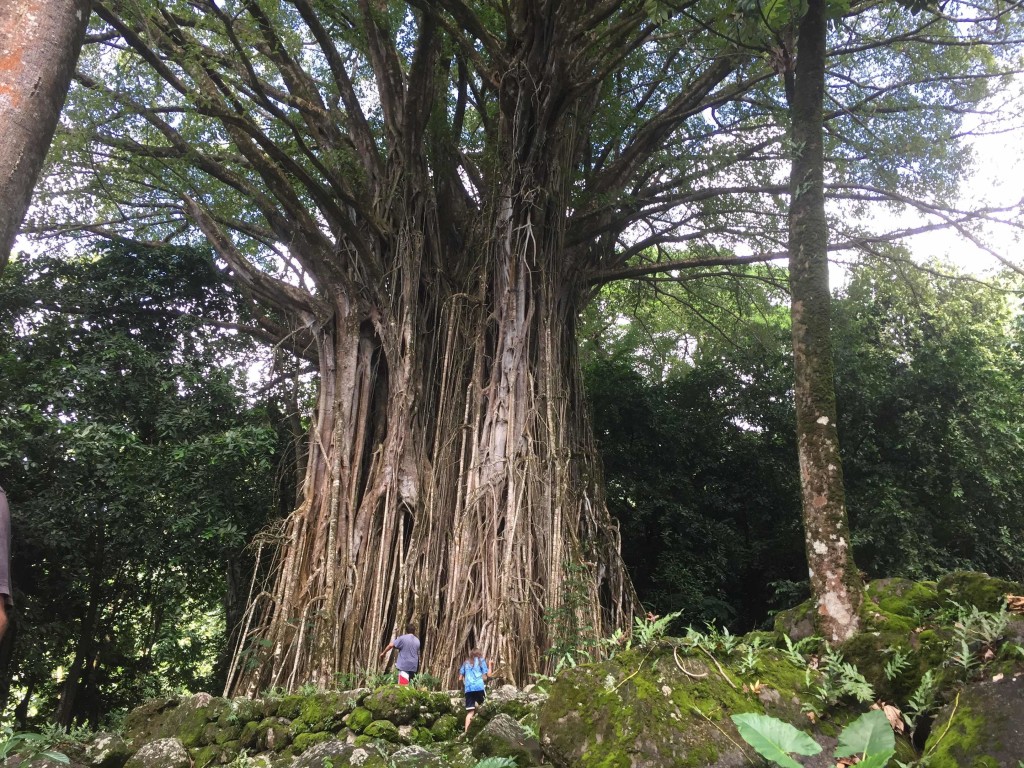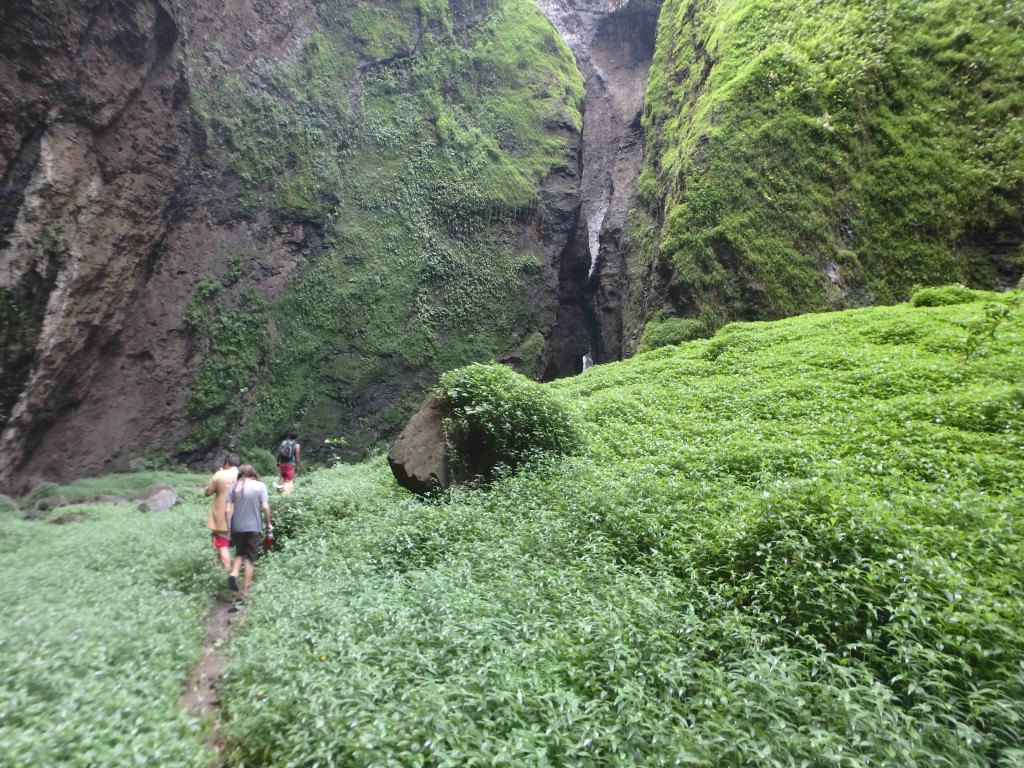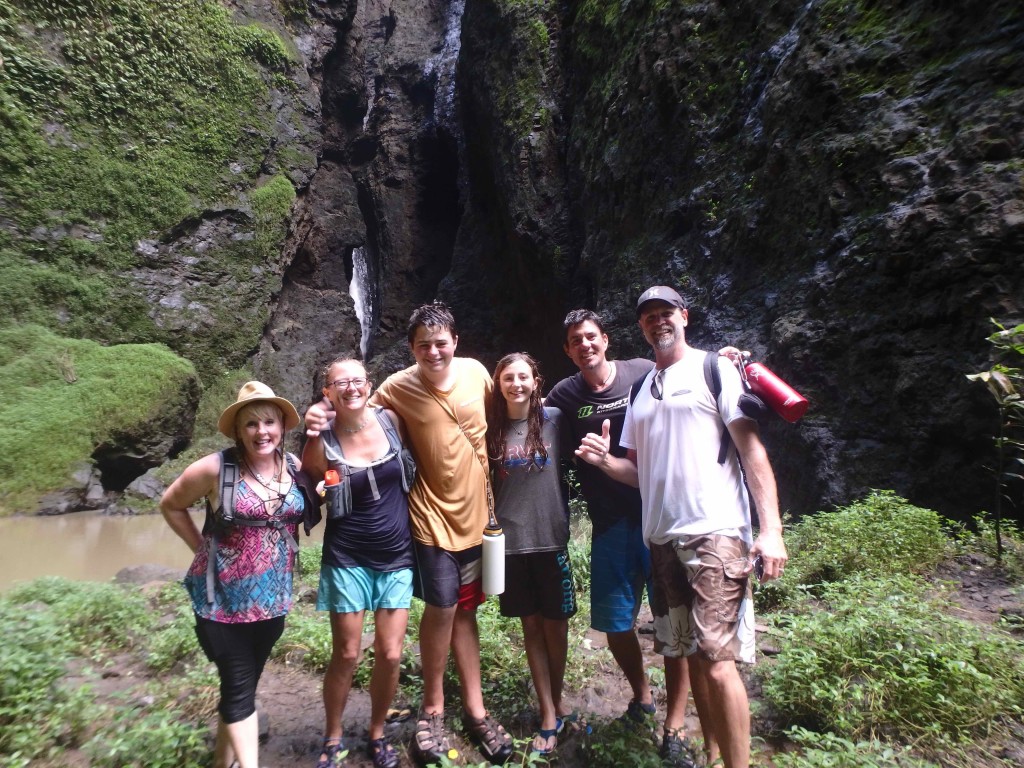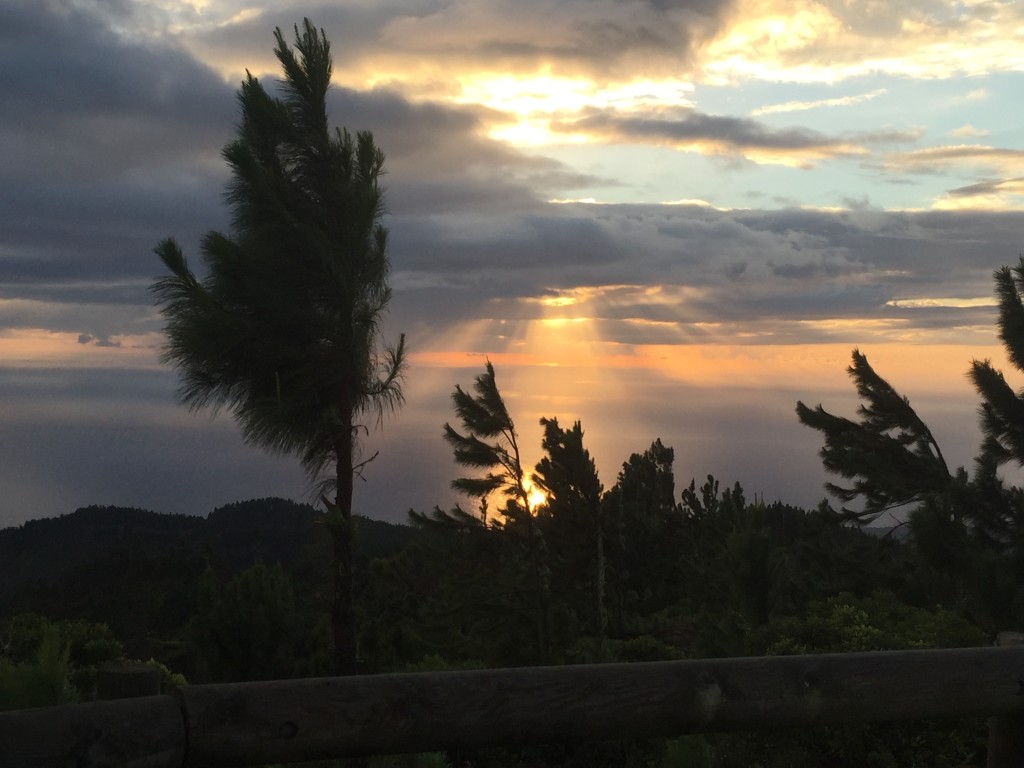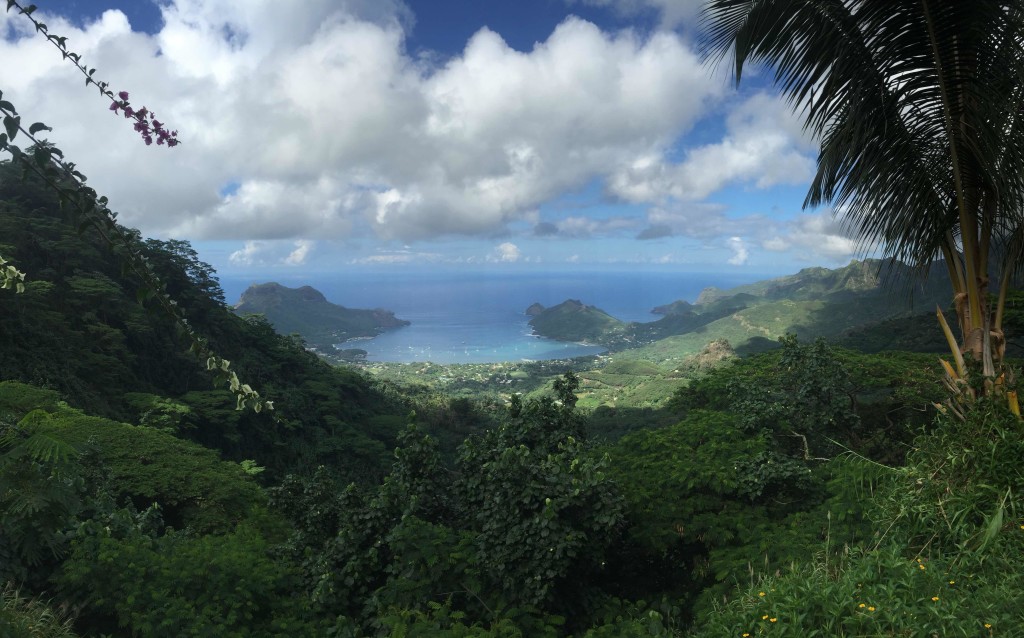
Getting rested from our month-long passage and previous months of preparations took a bit of time. After a week, we started venturing out from Taiohae Bay (pronounced Tai-o-hi-ay) to explore more of the island of Nuku Hiva. We hiked and dingied around Taiohae at first, slowly adapting to the language and the culture. We rented a car for a day and enjoyed incredible scenic vistas, archaeological ruins and the bliss of air conditioning. While we saw some wonderful sights, certainly one of the highlights of our exploration was the week we spent anchored in Daniel’s Bay, known locally as Taioa Bay (pronounced Tai-o-ah).
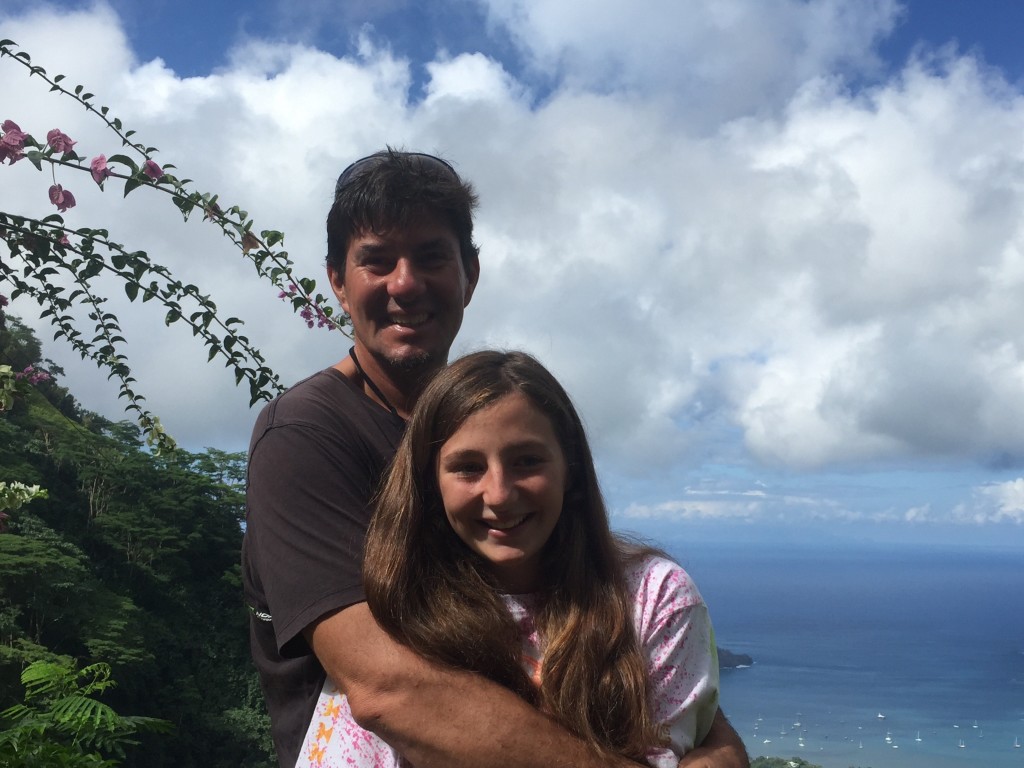
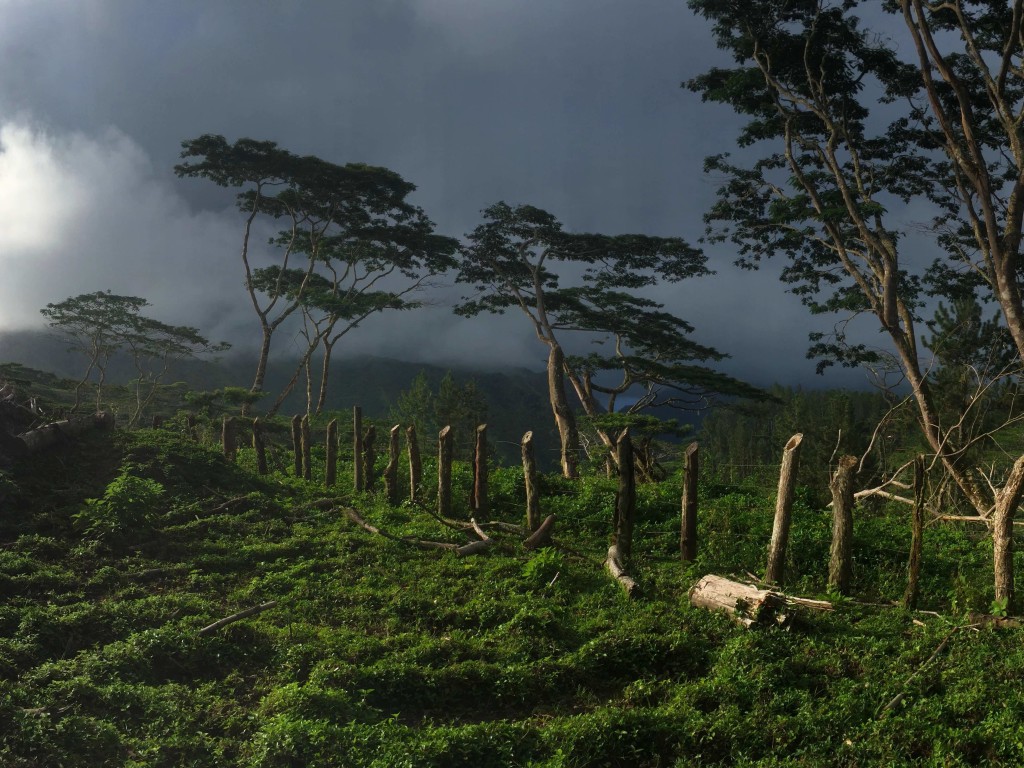
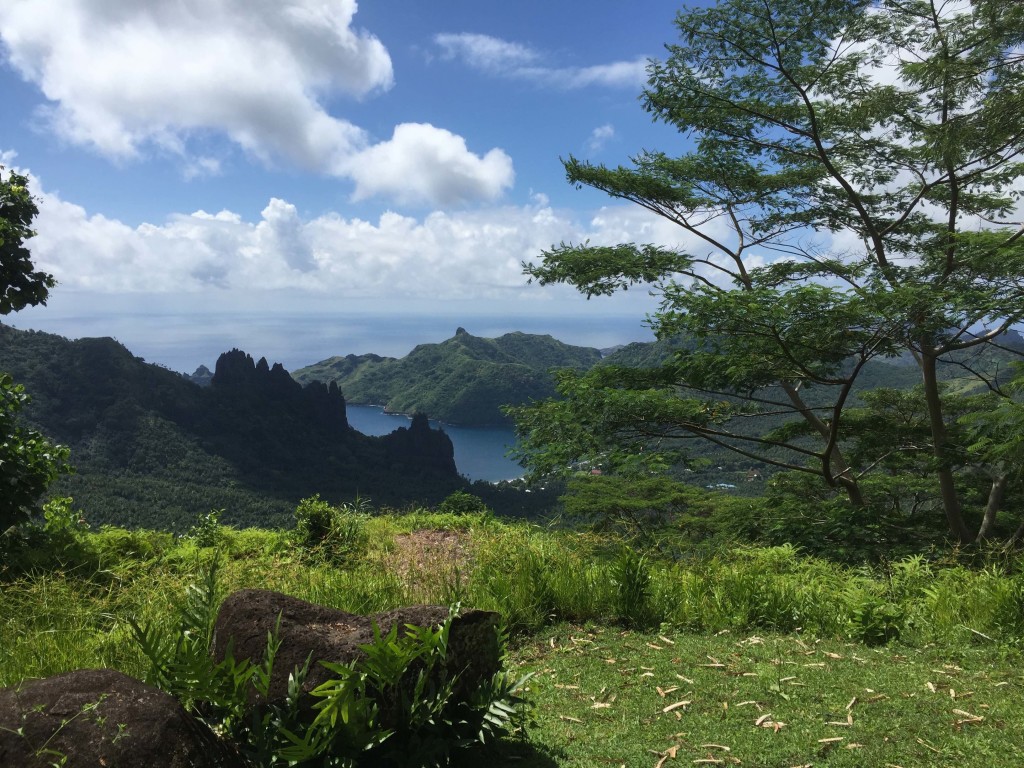
Daniel’s Bay is at the foot of a deep-cut valley protected by dizzyingly tall 2000 foot walls, jagged and rough, with massive rockfalls and chutes that turn to rushing whitewater the instant rain begins to fall. This incredible valley was carved by the Hakatea Stream which courses through it’s depths and which makes the 2000-foot tall Hakatea Falls, the world’s third highest waterfall. We were lucky and honored to become friends with Paul, a local Marquesan, who is one of 10 people still living in this valley. Paul led us on a slippery, muddy, rocky 6-hour hike and swim to the foot of the falls. During the hike Paul told us how his family used to rule this valley, and the island of Nuku Hiva, as the royal family. When westerners arrived, Paul’s family was forced to give up their claim to the monarchy, but they continue to live in the Taioa valley. Of the valley’s 30,000 original inhabitants, the population has dwindled to just a few members of the original family. We were able to see stone carved tikis and impressive architectural ruins of the former inhabitants. The hike was an unforgettable experience, the swim challenging and exhilarating, but perhaps the most delightful part was connecting with the beautiful people of this valley and understanding, albeit briefly, how they live.
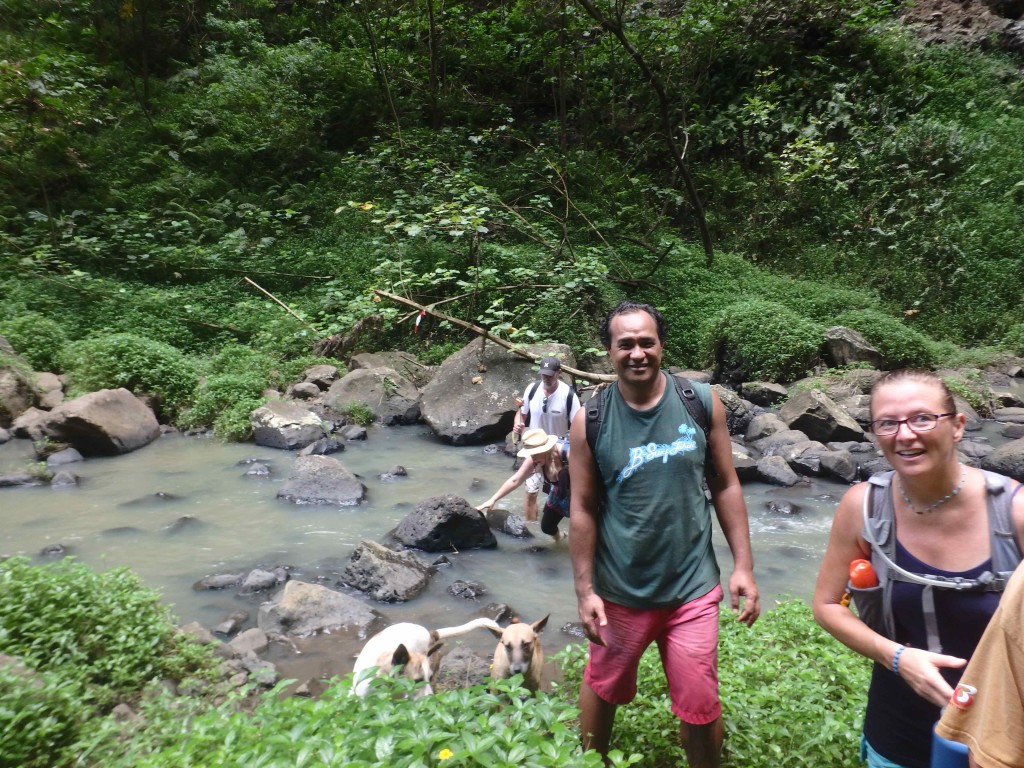
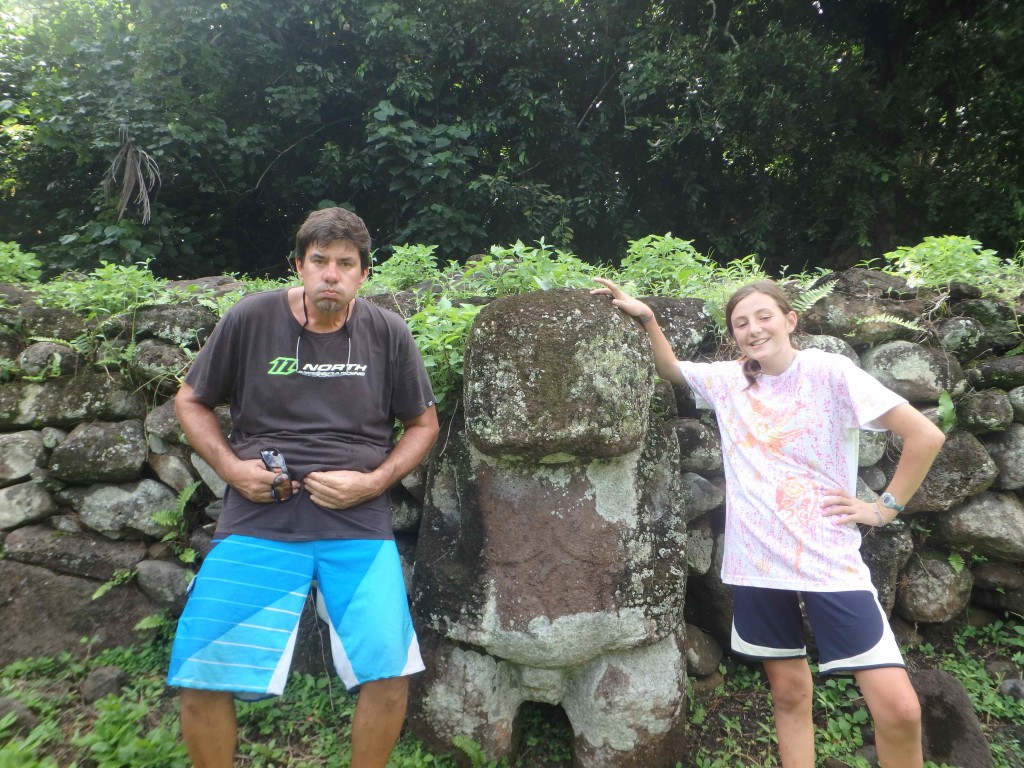
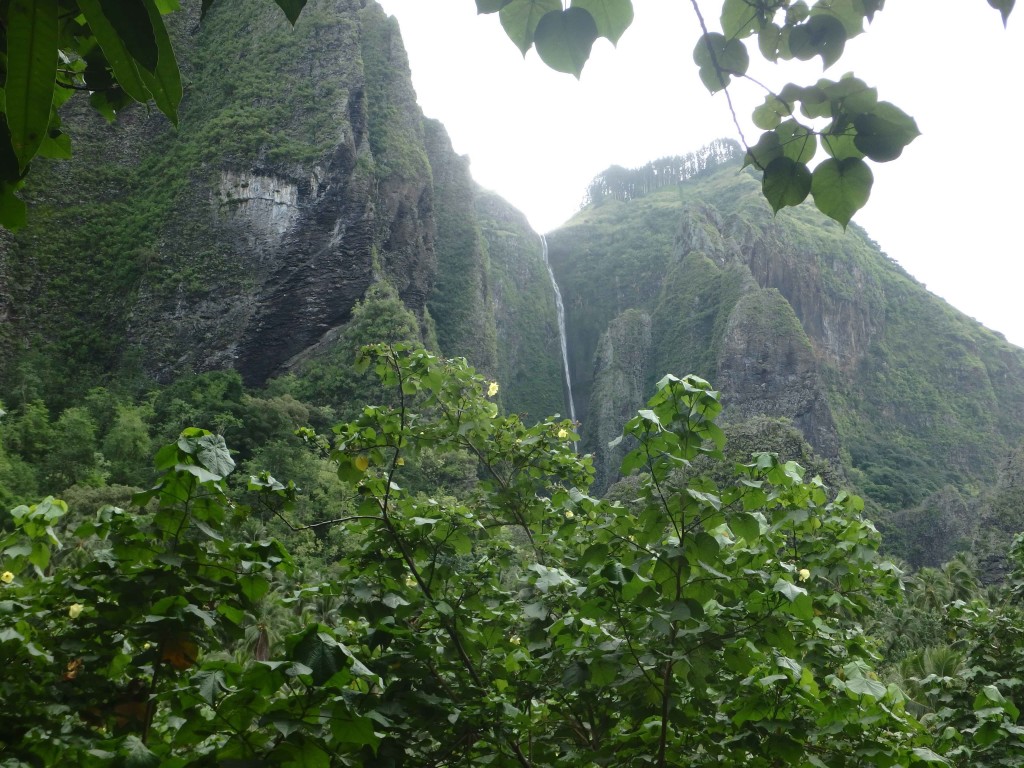
After the hike we had dinner with Paul’s great-aunt and uncle, Monette and Mattias. Despite what must be a steady stream of cruising sailors hiking through their valley, these people invited us into their lives, sharing warmly and freely as if we were a long-lost part of their family. Monette laid out a spread of barbecued chicken, coconut poison cru, fried bananas, green papaya salad, Marquesan gnocchi, star fruit and iced lime-aid, all made from produce of the valley. The meal was delicious, made even more scrumptious by the exercise of our arduous hike.
Monette and Mattias’ home is extremely modest. Beautifully kept, it consists of nothing more than a simple shed roof supported by posts sunk into concrete slab. They use electricity sparingly, supplied only by a gasoline-powered generator for occasional power to a fridge box and a couple bare light bulbs. Their daily work is harvesting coconuts (copra) and the copious fruits which are (quite literally) falling from the trees all around them. They have what they need, so money has very little importance in their lives. Consequently, they live in a vastly different way than the hurried, quasi-panic we’ve come to accept in western culture. They are delightfully peaceful people who truly value personal interactions over material acquisitions. What a refreshing outlook; something to consider as we continue our journey.
We were fortunate to enjoy two meals with this family and are touched to feel like we’ve made new friends. It was in hopes of genuine experiences like this that we chose to live the voyaging life.
